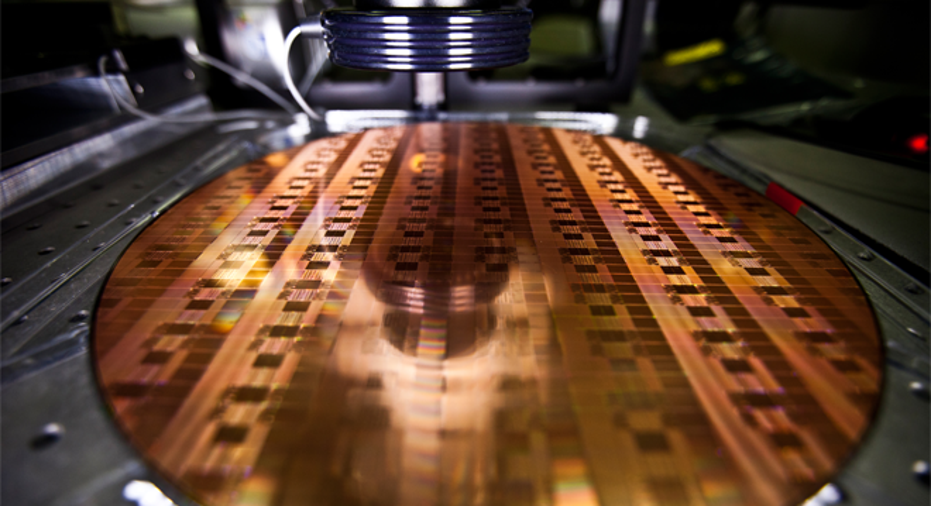Taking the ‘Silicon’ Out of Silicon Valley

Let’s get one thing straight. As a guy who got his start designing chips, I find the whole notion that technology has moved beyond sophisticated semiconductors and processors to the realm of dopey cat videos on YouTube and apps like “Fit the Fat” and “Toilet Time” to be nauseating, if not down-right repulsive.
Besides, name changes are usually dumb ideas. Texas Instruments (NYSE:TXN) doesn’t sell any instruments. Plantronics (NYSE:PLT) doesn’t make irrigation systems. And the most valuable tech brand on Earth is named after a fruit, for God’s sake. You don’t see Apple (NASDAQ:AAPL) or any of those other companies rebranding themselves, do you?
That said, mobile payment provider Isis has figured out that having a name associated with a violent militant group in the Middle East is not such a good idea when you’re struggling to gain traction in a competitive market.
And remember Justine Sacco, the PR exec who tweeted, “Going to Africa. Hope I don’t get AIDS. Just kidding. I’m white!” I bet a Google search of her name will still turn up references to that ill-conceived tweet decades from now. The woman can definitely use a clean slate.
As for Silicon Valley, there’s no brand crisis going on here, at least not today. But tomorrow is another day … and another story entirely. There are a number of reasons why the region named for the element that semiconductor chips are made of may want to rethink its brand identity.
Diamonds are Forever, But Not Silicon
To increase computer processing power and storage capacity, chip circuits have to shrink. As those dimensions approach a few nanometers – the width of a molecule or a few atoms – silicon technology starts to hit a wall that the laws of quantum physics simply won’t allow researchers to overcome.
It’s a reasonable bet that, within most of our lifetimes, the technology we use in our day-to-day lives will be based on something other than silicon. Chip giant Intel (NASDAQ:INTC), IBM (NYSE:IBM), and universities around the world are plowing billions into research on materials with superior quantum properties that can potentially be made into circuits that are smaller, stronger, and faster than those made of silicon.
Some of the most promising materials include semiconductor compounds such as indium gallium arsenide, carbon nanotubes that are stronger than diamonds and being investigated for use in a broad range of applications, and graphene – a carbon film that’s a single atom thick and has already been made into a broadband radio-frequency integrated circuit.
Perhaps the most novel concept is an IBM invention called “racetrack memory,” which uses microscopic magnets moving along nanowires to store and retrieve information that can be used in place of today’s flash memory.
But don’t count silicon out just yet. Neuromorphic chips that behave like networks of neurons and synapses in biological brains are being developed for cognitive computing applications. It’s a new type of architecture that uses existing silicon technology to make smart sensor networks that mimic the brain’s unique cognitive ability in a tiny space.
Yo Valley?
Since neuromorphic chips require a new computing architecture, they’re actually more of a programming challenge than anything else. Which is as good a segue as any to a growing issue that I, for one, have been trying to avoid for what seems like an eternity: That our culture, our stock market, and sadly, even our very own venture capital firms value software more than hardware. A lot more.
You and I both know that all the trillions of lines of code in the world would not be worth the paper they’re no longer printed on if there were no processors and hardware for them to run on. The Internet, the cloud, smartphones and tablets, iOS and Android, apps, games, social networks, messaging, even the Internet of Things – none of it would exist without silicon.
But that doesn’t change the unassailable fact that, unless it’s made by Apple – the company, not the fruit – all that hardware with all that silicon has become more or less indistinguishable, interchangeable, identical, invisible, and undifferentiatable – if that’s even a word.
Don’t believe me? Try starting a crowdfunding campaign for graphene or neurosynaptic chips. You would raise about as much dough as you would if you pitched it to every VC in the valley. In other words, you’d raise Bupkis. Nada. Zilch. A big round donut.
But create a Kickstarter project to make potato salad and you’ll raise $45,142. It doesn’t even have to be a special kind of potato salad: “Basically I’m just making potato salad. I haven’t decided what kind yet,” according to the project’s creator. And it’s risky: “It might not be that good. It’s my first potato salad.”
And those same VCs that wouldn’t give you a penny to develop a new semiconductor technology that can change the world might write you a check for $1 million if you’re willing to spend eight hours to develop an app that’s only capable of messaging a single word, “Yo.” And maybe they’d be right because, crazy as it sounds, Yo somehow managed to go viral and crack the top 10 free iPhone apps.
So maybe it is time to at least start thinking about rebranding or repositioning Silicon Valley. Maybe it should just rejoin the San Francisco Bay Area again. As silly as that sounds, I guess it’s no sillier than funding Yo or potato salad.
Besides, sooner or later, silicon’s 15 minutes of fame will be over. And the brand that once represented the cradle of technology, the element that used to be inside every electronic device on Earth, will just go back to being a humble component of sand and rocks. That much is inevitable.